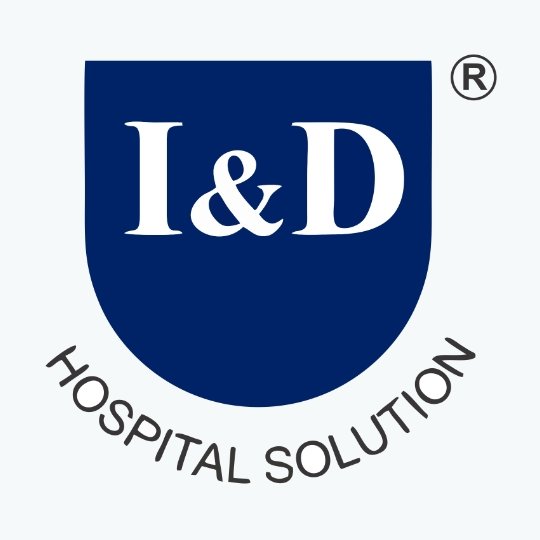Role of Hospital Project and Feasibility Studies
- 14/04/2020
- Posted by: admin
- Category: Blogs

The role of the healthcare industry (healthcare consultant) is well known and it is on rapid advancement. This development is creating the need for several jobs to be done by the specialist staff. So one of the emerging healthcare businesses is Hospital Planning which includes all the details of the hospital project which is raw to some extent but is a Blueprint of the complete project Plan. So in the process, one is the feasibility study on Hospital Project which depicts the viability of the project thoroughly and shows it’s feasibility in all aspects.
The hospital project is the whole vital step in Hospital planning itself. It is practically the documented portion of the planning. There are several steps for the hospital planning which are:
- Selection of Site
- Site Planning
- Elements of Site Planning
- Principles of Planning
- Steps of Hospital Planning
- Need for Assessment
- Project’s Brief
- Detailed Project Report
All these steps lie after one another as they are to be carried out. It is interesting to note that if these steps are being jumbled when followed it in some way or the other can challenge the principles of management which may result in the needful practically but not to the Supreme which it can. All these steps are not carried out simply they need much specification proper detailing to make the planning ornate.

Now let’s understand the specification of each step:
- SELECTION OF SITE
- This is the first and very basic step of hospital planning in which the focus relies on the selection of the place where the hospital is to be built.
- One and most important form is the need of the community. It also helps to determine the specialty need in the hospital.
- Another important factor is the ease of accessibility to the healthcare institution. The selection is also dependent on the technology available. It practically refers to the fact that the technology being offered is accessible by the community in financial terms or if they are need for that technology or not.
- The most important fact is about the study of existing Hospitals in that particular community as it helps in plan development for the marketing of the Hospital.
- The next fact is the requirement of staff in the area. If the staff will be available to work in Hospital conveniently or not.
- The availability of public utilities like Water Supply, Electrical Supply, Sewage System, etc. also plays a very important role in site selection. If any of these services are not available or maybe not available appropriately will hinder the texture of the Services to be provided.
- Vulnerabilities to natural hazards is an important aspect but do not apply to all the areas. As it applies to all the prone areas of the particular natural calamity depending on its geographical location.
- SITE PLANNING:
- Site planning refers to the science and art of arranging the structures on Land and shaping the spaces between. In other words, it can be defined as the allocation of functions in a piece of land to derive efficient utilization of resources.
- It is the process which focuses on the planning of the complete site along with the breakup of resource of land to be allocated.
- ELEMENTS OF SITE PLANNING:
- Elements of site planning refer to the blueprint of the construction on a very initial stage as it includes building (Main & Service), Roads (Public & Service), Pedestrian Walkways, Access to Pedestrian movement, Vehicular Movement, Emergency Movement & Drop off Services.
- It includes transportation services as well which are Public & Private. So parking stands at every required point. It may further be bifurcated into Surface & Basement Parking.
- PRINCIPLES OF PLANNING:
- It is the Site Analysis which includes the Topography (map of surface features of land), Natural features (Vegetation, Water Bodies, etc.), prevailing wind Direction, Soil Condition & the climatological Data.
- It’s the process in which the target is Accessibility, Views from the site & Views to the site.
- It’s a vital step in the planning & designing process. It is the process of assessment of the site in terms of environmental impact & the impact on community & adjacent properties.
- It benefits in identifying the SWOT (Strength, Weakness, Opportunity & Threat) related to the site & development of the project.
- The proper execution of this step supports the information of a strong foundation favoring cost-effectiveness & approach to project development.
- STEPS OF HOSPITAL PLANNING:
- It is a complete process which is to be followed after one another which are
- Need Assessment.
- Feasibility Report
- Architects Brief
- Request for Proposal
- Meeting Consultants
- Detailed Project Report
- Analysis for the Best consultant
- Award of work
- Construction of Building, Services & Facilities
- Equipment Purchase & Manpower planning
- Selection & Recruitment
- Execution of the planning and making the Hospital walk & later run.
- NEED OF THE ASSESSMENT:
- Background of the Project which refers to the key characteristics to explain why we have initiated the Project.
- Situational analysis is also done necessarily to figure out about the Geographical studies, the population of the region of the catchment & socio-economic profile of the region.
- It also supports the assessment of the health profile of the region & view of health scenarios on national, regional & local levels.
- Vital Statistic data also plays an important role such as Needs & Demands, Population strength, Sex & Age Ratio & Social Status.
- PROJECT BRIEF:
- It has 03 briefs which are Medical Brief, Architects design Brief & Equipment Brief.
- Medical Brief includes the introduction of Scope & Level of services, Justification of the Services to be offered. It would also contain the policies defining the services to be offered by each department. SOP (Standard Operation Procedure) will also be made and followed for the operational & Management Practice.
- will also include the function brief of every department including the workflow.
- Architectural Brief would include the Site Information, Applicable By-Laws (Permissible ground coverage), Parking Requirement & Detailed Area Program (Department Wise List including Area to be included for each room & functional room description).
- Equipment Brief will include the Introduction to each equipment, Applicable Norms (AERB, NABH, NABL), detailed specification of each equipment (Department wise list including Size, numbers & layout of the equipment) & it will include the electrical load & the environmental conditions required. (nabh certification& nabh accreditation)
- DETAILED PROJECT BRIEF:
- It would firstly include the Background of the project.
- Limitations of the project.
- Planning Principles Involved.
- Design Considerations with architectural Design and its specifications.
- Service Design including DBR (Design Basis Report). The highlight at this point is the firefighting Scheme.
- Environmental Impact Assessment Report.
- Most importantly detailed estimate of the Project.
- Financial statement & Labor Deployment.
- List of Medical Equipment & Specification.
So after understanding the complete process in detail, some focus is to be given to the PERT (Program Evaluation & Review Technique) which will enhance the efficiency of the project. This is drawn regularly after the application of any technique to review its result.
CONCLUSION:
The conclusion here is the thorough process of Hospital Planning and the execution support as well. It included all the steps with the appropriate brief in layman’s language which are easy to be understood and executed. It has also highlighted the importance of the Consultant’s support in Hospital Planning. The focus is also given on the feasibility of the planning of the Hospital Project.



